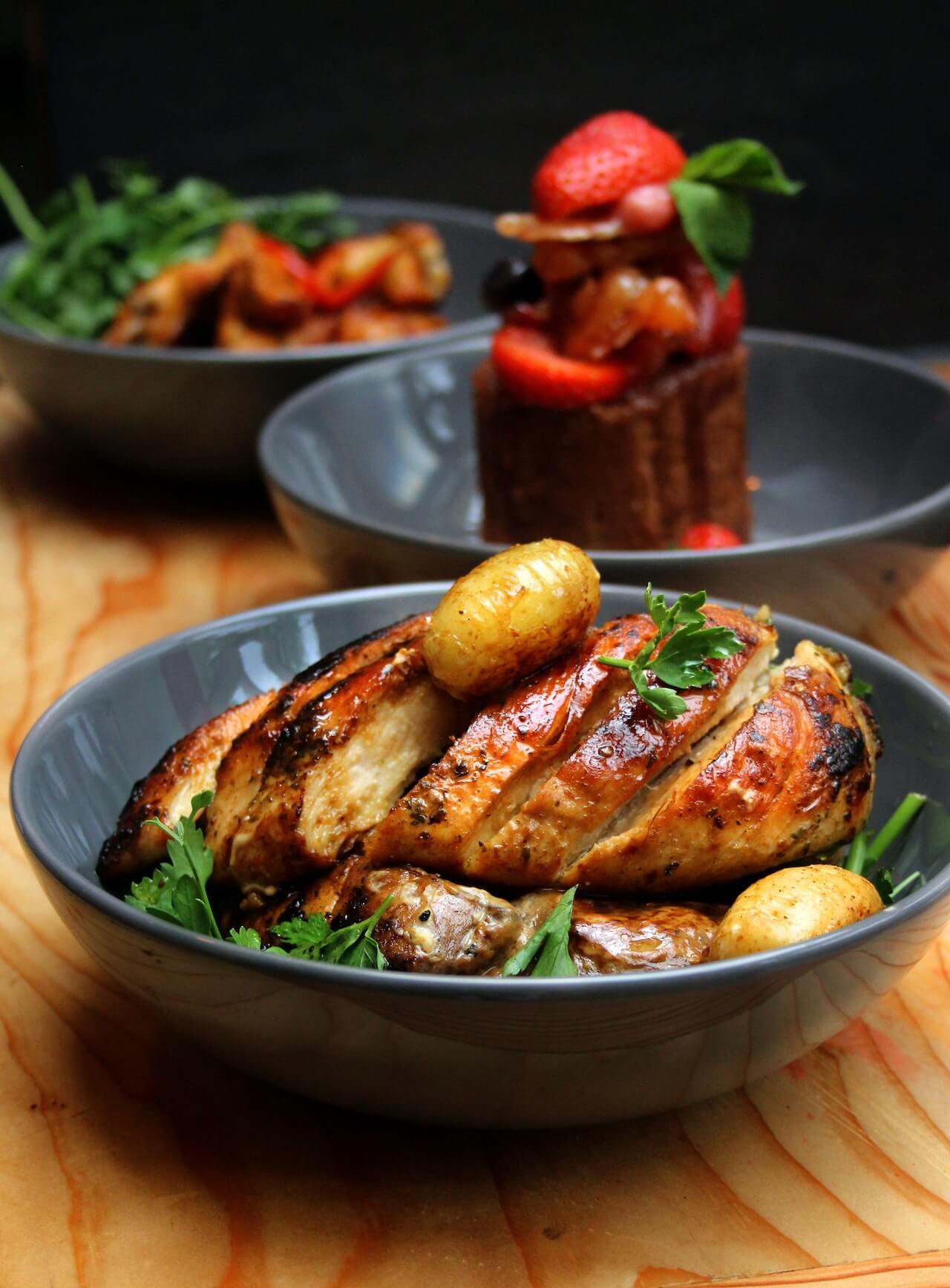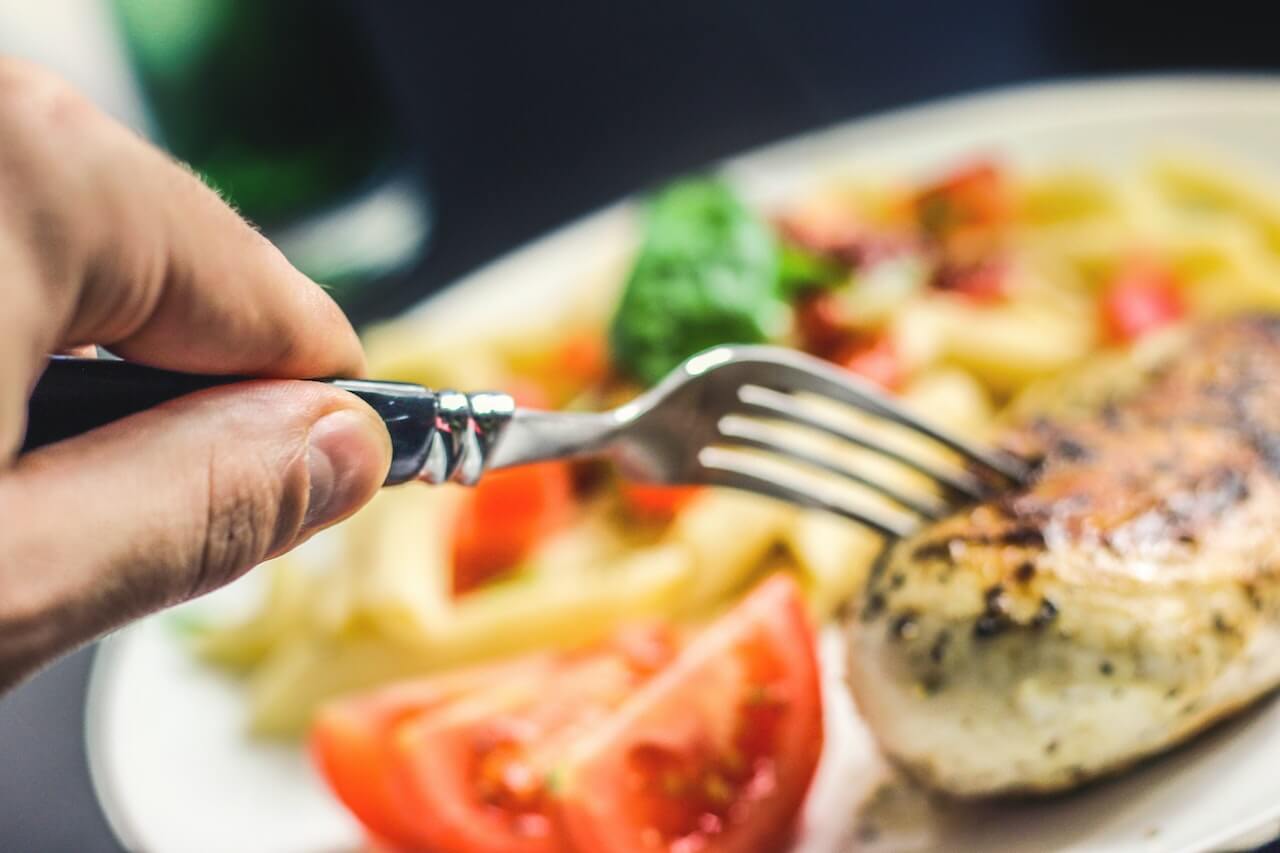As a swimmer, you may have noticed your appetite increases significantly after swimming sessions. Why do swimmers eat so much?

Swimming is a full-body activity that can burn 200-350 calories in 30 minutes for a 155 pound person. Additionally, the human body will try to keep its core temperature high while in the water, and this thermoregulation process uses up even more energy. To refuel, swimmers have no choice but to eat so much.
In this article, we’ll take a closer look at the factors contributing to swimmers’ large appetites and their unique nutritional needs to better understand why they eat so much.
Why Swimmers Eat So Much
Caloric Needs of Swimmers
As a swimmer, you might notice that your appetite increases due to the intense workouts and high demand for energy.
Swimming is a full-body workout that requires a lot of calories to fuel your body. The faster you swim, the more calories you burn. For example, a 155 lb person swimming freestyle for 1 hour will burn about 704 calories swimming fast and 493 calories swimming slow.
Not only does your workout intensity play a role, but also the volume of your workouts. Many athletes will even swim twice per day during peak training, further increasing their caloric needs.
That’s not even taking into account dryland training or swimming using swim paddles or other equipment that can make the activity harder.
Increased Metabolism and Appetite
Swimming regularly can boost your metabolism, which is the process of converting food into energy. With increased metabolism, you tend to feel hungrier because your body is demanding more nutrients to keep up with your energy needs.
And just because you’re feeling hungry doesn’t mean you can shove anything down your mouth. You need to put some high quality fuel into your body to help your muscles recover and give you the energy you need to perform at your best.
The Thermic Effect of Water
Another factor contributing to swimmers’ increased appetite is the thermic effect of water. Swimming in cooler water forces your body to work harder to maintain its core temperature. This process requires additional energy and can stimulate hunger.
One compelling theory suggests that the temperature difference between land-based and aquatic workouts is a significant reason why swimmers tend to eat more.
In other words, due to thermoregulation, your body is literally burning more calories just by virtue of you being in the water.
Post-Swim Hunger Explained
At this point in the article, it should be clear why swimmers are so ravenous post-swim, and the answer lies in the energy expenditure that takes place during your workout.
To recap, swimming is a full-body workout that targets multiple muscle groups. This increased energy demand on your body triggers your natural hunger response, hence the post-swim cravings.
Add on to that your body’s need for thermoregulation to keep your core temperature high, and you are burning more calories while swimming than most activities on dry land, assuming the same intensity and time spent exercising. If you don’t eat enough food, you will end up losing weight rapidly.
To keep post-swim hunger in check and ensure proper refueling, have a well-rounded meal or snack within an hour or two of finishing your workout. This will not only help satisfy your appetite but also contribute to a speedier recovery and improved performance.
The Role of Diet in Swimmer Performance
Understanding the Swimmer’s Diet

As a swimmer, you are constantly pushing your body to its limits, and proper nutrition is key in supporting your performance and overall health.
To that end, a swimmer’s diet should consist of a balance of protein (chicken breast, fish, egg whites), healthy fats (like olive oil, nuts, avocados, and seeds), carbohydrates (such as whole wheat bread, brown rice, and oatmeal), vegetables, fruit, whole grains, vitamins, and minerals to ensure optimal recovery and prevent energy crashes.
Begin your day with a nutritious breakfast that includes yogurt, granola, and peanut butter to fuel your body for morning practice. Don’t forget to incorporate plenty of vegetables in your meals as they provide essential vitamins and minerals to support your immune system and overall health.
Meal Timing and Hydration
When it comes to meal timing, it’s important to consider both pre- and post-workout nutrition. Before hitting the pool, have a light meal or snack that is rich in carbohydrates to fuel your exercise.
For your post-swim recovery, consume a meal consisting of both carbohydrates and proteins to help replenish your energy reserves and support muscle repair.
Not only is solid nutrition important for swimmers, but hydration plays a critical role as well. Drink plenty of water throughout the day, especially before, during, and after your swim sessions to stay hydrated and support optimal performance.
Swimmers’ Diet in Action
Michael Phelps’ 10,000 Calorie Diet
Remember when Olympic gold medalist Michael Phelps reportedly ate 10,000 calories a day during the 2008 Beijing Olympics?
This eye-popping number set the internet ablaze and cemented the image of the endlessly-eating swimmer. I think most people couldn’t eat 10,000 calories a day even if they wanted to.
But is the 10,000 calorie diet just an exaggeration, or is he really telling the truth? Let’s think about it for a second.
Michael Phelps reportedly swam for 6 hours a day on average. Using the figures we provided earlier and estimating conservatively, he could have potentially burned 4,000 to 5000 calories a day just from swimming alone.
Add on to the fact that he probably needs to eat 3,000 calories or more just to get through the day (he is 6’4” and weighs 200 lbs), and account for other training he might have done such as dryland training, and a 10,000 calorie a day diet doesn’t seem so unbelievable.
Comparing Swimmers’ Diets to Other Athletes
While a swimmer’s main focus is carbohydrates and protein, their diet may not significantly differ from other athletic diets. Still, there are some considerations to keep in mind.
Swimmers, due to their high-intensity workouts, may have an increased caloric and carbohydrate intake compared to other athletes.
For example, a runner might fuel up on complex carbohydrates such as whole grains and pastas, while a swimmer would place more emphasis on simple carbohydrates since they are easier to digest.
Remember that your diet should always cater to your specific training, body composition, and energy requirements.
So, as you try to emulate the diets of Olympic swimmers like Michael Phelps and Katie Ledecky, remember to balance your diet to suit your own needs and preferences.
Enjoy those breakfast omelettes and lunchtime salads to fuel your training, while also incorporating a variety of fruits and healthy fats. But most importantly, listen to your body—it knows best.
Sources:
- https://www.swimmingworldmagazine.com/news/the-big-deal-about-a-swimmers-nutrition/
- https://www.health.harvard.edu/diet-and-weight-loss/calories-burned-in-30-minutes-for-people-of-three-different-weights
- https://blog.myswimpro.com/2021/06/08/why-do-swimmers-eat-so-much/
- https://blog.myswimpro.com/2020/11/10/why-swimmers-are-hungry-all-the-time/
- https://www.usms.org/fitness-and-training/articles-and-videos/articles/protein-for-swimmers?Oldid=369
- https://www.swimteaching.com/2022/09/why-do-swimmers-eat-so-much.html
- https://olympics.com/en/news/michael-phelps-10000-calories-diet-what-the-american-swimmer-ate-while-training-
